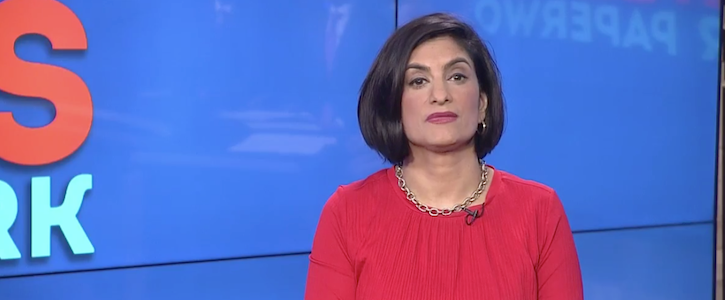CMS Says New Rule Could Save Clinicians 51 Hours of Paperwork Per Year
Leaders today focused on E&M visits when promoting the rule.

Seema Verma, M.P.H., administrator of the Centers for Medicare & Medicaid Services
If the Centers for Medicare & Medicaid Services’ (CMS) proposed rule changes become canon, American clinicians could each dedicate an additional 51 hours per year to patient care, according to the agency.
CMS Administrator Seema Verma, M.P.H., unveiled the number, derived from an internal analysis, this morning in a live Twitter broadcast to promote a series of rule changes focused on reducing paperwork for Medicare reimbursement requirements. The total annual patient care time that the American healthcare system would gain would equal 500 years, time currently spent on documentation for billing purposes, Verma said.
Prior to proposing the rule changes to Medicare’s Physician Fee Schedule last week, she and her colleagues toured the country speaking with providers to better understand the challenges they faced.
>> READ: Hoping to Foster More Doctor-Patient Time, CMS Proposes Billing Changes
“And one thing we heard time and time again was that time spent on paperwork is time spent away from patients,” Verma, sitting before a screen that read “Patients Over Paperwork,” told her virtual audience. “It became clear to me that if we are serious about improving quality and access for patients, we have to address the concerns of providers on the frontlines.”
Although the CMS proposal covers everything from drug costs to telemedicine, today’s presentation focused on requirements for evaluation and management billing. Such visits make up about 40 percent of Medicare payments under the Physician Fee Schedule, and nearly 750,000 physicians use the corresponding codes, Verma said.
But the government has not updated the guidelines since the mid-1990s, leaving in place a leveled reimbursement and documentation system that Verma and her colleagues said has grown too burdensome.
“Putting together notes to meet all of these documentation requirements takes up significant time and energy,” the administrator said. “This is a poor use of their time, and we are not leveraging the value of America’s clinicians.”
Under the new rule, physicians would need to provide only a certain level of documentation, no matter their patient’s care level, said Kate Goodrich, M.D., the chief medical officer for CMS. Clinicians would not need to replicate patients’ existing family, social, and medical histories. In turn, however, providers would receive a single payment rate as opposed to the existing tiered rates.
During a question-and-answer session, Stanford University School of Medicine Dean Lloyd B. Minor, M.D., expressed a concern that has been floating through provider circles in recent days: Lower reimbursement rates for more complex care could pose a problem for physicians and patients.
Anand Shah, M.D., chief medical officer for the CMS innovation arm, said his analysis suggests that payments would decrease by 1 or 2 percent at most. Don Rucker, M.D., the national coordinator for health information technology, added that he expects providers to spend at least 5 percent less on labor-intensive billing processes.
The troubles with Medicare documentation stem from an attempt to manage two clashing forces: paying doctors the proper amount for their services and not bankrupting the program, Rucker said. In the ‘90s, that goal required detailed documentation, but the rise of the electronic health record has further complicated the matter, he said.
“Patients see this in a couple of different ways: The doctor is looking at the computer and not at them,” Rucker added. “We’ve heard that time and time again.”
While some concerns linger regarding the proposed rules, many stakeholders have come out in support of the measure, calling it a win for physicians, patients, and value.
The public may comment on the proposal until Sept. 10. For more information, click here.
Get the best insights in healthcare analytics directly to your inbox.
Related
The Slow, Frustrating Rise of the Electronic Health Record
CMS is Leading the Way Toward Bundled Payments. Should It Be?
Healthy Bottom Line: The Trouble With SDOH Programs and the Secret to Improving Them
September 28th 2021Several problems exist with current programs that address social determinants of health (SDOH); however, a new social model aims to combat these issues and improve the programs’ effectiveness.